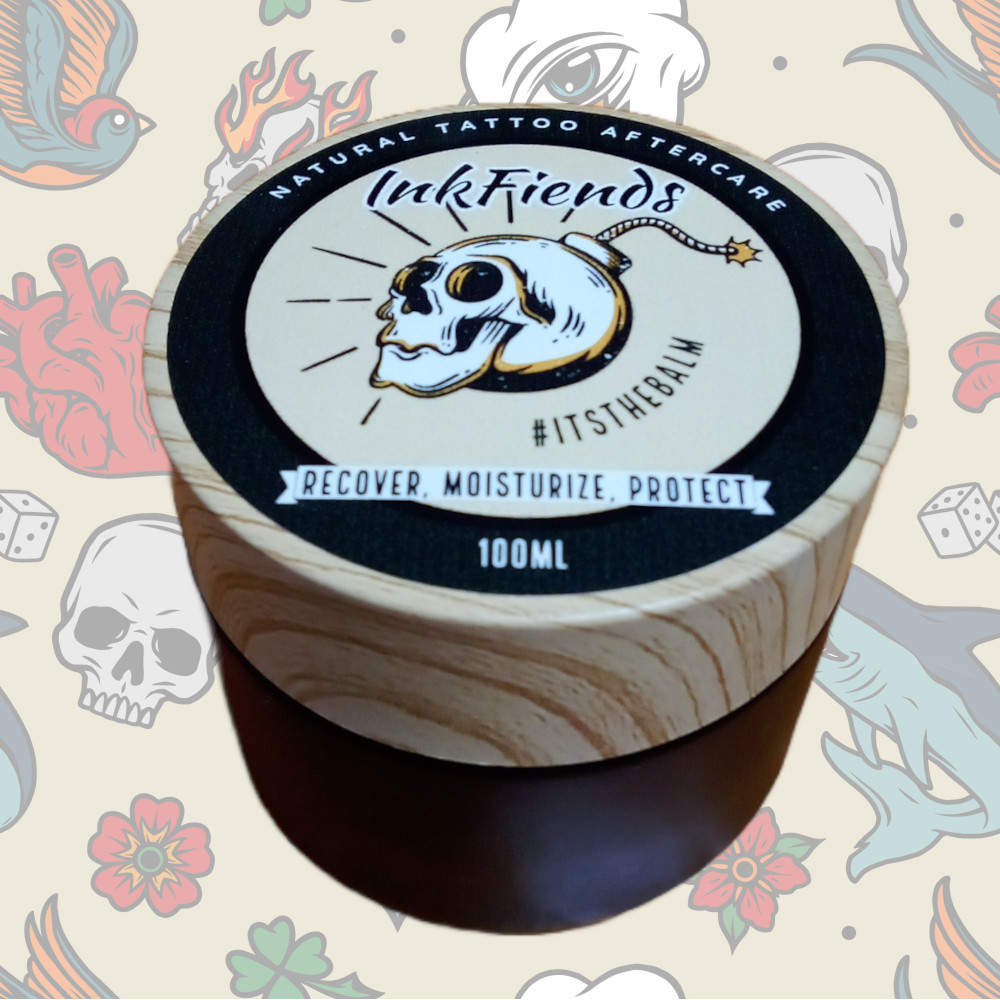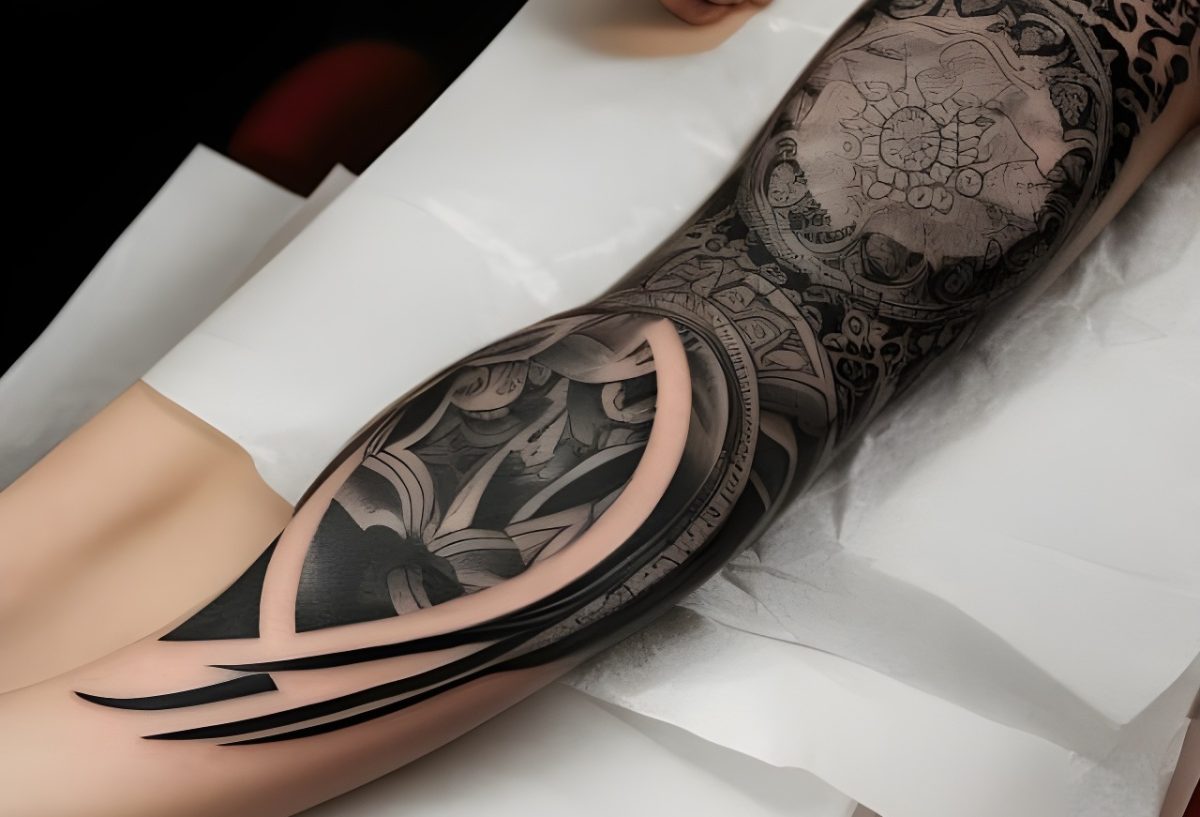Congratulations, you just got a new tattoo! Now it’s time to think about aftercare. Properly caring for your tattoo during the healing process can help reduce your risk of infection and ensure you have beautiful ink for years to come. Here is our complete guide with some tips to get you started.
Clean Your Tattoo Properly
Properly cleaning your tattoo is crucial for proper healing. You should always wash your hands before touching the tattoo to reduce the risk of introducing bacteria or germs into the area.
Gently clean your tattoo twice a day with mild soap and warm water, then rinse and pat dry with a clean towel. Avoid scrubbing or using harsh soaps, as this could irritate the skin and increase the risk of infection.
Cleaning a new tattoo is an essential part of the aftercare process to ensure proper healing and minimize the risk of infection. Here are some tips for gently cleaning your new tattoo:
- Wait for the appropriate time: Follow your tattoo artist’s instructions on when to start cleaning your tattoo. Typically, it’s recommended to wait a few hours after getting the tattoo before cleaning it.
- Wash your hands: Before touching your tattoo, thoroughly wash your hands with mild, fragrance-free soap and warm water. This step is crucial to avoid introducing any bacteria or contaminants to the fresh tattoo.
- Use a gentle cleanser: Choose a mild, fragrance-free liquid soap or tattoo-specific cleanser recommended by your tattoo artist. Avoid harsh soaps, exfoliants, or anything with alcohol or peroxide, as these can irritate the skin and slow down the healing process.
- Gently rinse the tattoo: Wet the tattoo with lukewarm water and use your clean hands or a soft, clean cloth to gently clean the area. Avoid using abrasive materials, loofahs, or scrubbing brushes, as they can damage the tattoo and disrupt the healing process.
- Pat dry with a clean towel: After rinsing, gently pat the tattoo dry with a clean, lint-free towel or allow it to air dry. Avoid rubbing the tattoo, as this can cause irritation and potentially pull out the ink.
- Apply a thin layer of ointment or moisturizer: Once the tattoo is dry, apply a thin layer of tattoo-specific ointment or a fragrance-free, gentle moisturizer recommended by your tattoo artist. Be careful not to overapply, as too much ointment can clog the pores and hinder healing.
- Follow your artist’s aftercare instructions: Your tattoo artist may provide specific aftercare instructions tailored to your tattoo. Follow them diligently, including any recommendations for washing frequency or additional products to use.
- Avoid excessive moisture: While it’s important to keep your tattoo clean, avoid soaking it in water, such as swimming pools, hot tubs, or baths, for at least two weeks. Excessive moisture can soften scabs prematurely and increase the risk of infection.
Remember, every tattoo and individual may have unique needs, so it’s best to consult your tattoo artist for personalized aftercare instructions. If you notice any signs of infection or have concerns about the healing process, contact a healthcare professional or your tattoo artist for guidance.
Moisturize the Area
After cleaning your tattoo, you should moisturize the area. Using a fragrance-free lotion helps to keep the skin soft and prevents it from drying out which can result in scabbing and fading of the design. We recommend Ink Fiends Natural Tattoo Aftercare as a moisturizer, it’s natural, fragrance-free, and suitable for all skin types.

Gently rub a thin layer of moisturizer into the area twice a day but make sure to avoid getting any lotion on the tattoo itself. Overuse of lotion can also cause problems, so stick to small amounts at a time.
Moisturizing is a crucial part of tattoo aftercare as it helps keep the skin hydrated and promotes healing. Here are some general guidelines for moisturizing a new tattoo:
- Timing: Begin moisturizing your tattoo after the initial cleaning process and once the tattoo is completely dry. Typically, this is recommended after the first 24 hours.
- Choose the right moisturizer: Select a fragrance-free, gentle moisturizer specifically formulated for tattoo aftercare. Look for products that are free of alcohol, fragrances, and dyes, as these can potentially irritate the skin. Your tattoo artist may recommend a specific brand or type of moisturizer, so it’s a good idea to follow their advice.
- Clean hands: Before applying the moisturizer, make sure your hands are clean. Wash them thoroughly with mild soap and warm water to minimize the risk of introducing bacteria to the tattoo.
- Apply a thin layer: Take a small amount of moisturizer and gently rub it between your clean hands to warm it up. Then, apply a thin layer of the moisturizer over the entire tattooed area. Be careful not to overapply, as a thick layer can suffocate the skin and delay the healing process.
- Gently massage the moisturizer: Use gentle, circular motions to massage the moisturizer into the skin. This helps the product penetrate the layers of the skin and aids in absorption.
- Repeat as needed: The frequency of moisturizing may vary depending on your tattoo and its healing progress. In general, it’s recommended to moisturize your tattoo 2-3 times a day or as instructed by your tattoo artist. However, avoid excessive moisturizing, as it can clog the pores and prolong healing.
- Be consistent: Consistency is key when it comes to moisturizing your tattoo. Stick to a regular schedule and ensure you apply the moisturizer consistently throughout the healing process. This will help keep your tattoo properly hydrated and maintain the vibrant colors.
- Observe the healing process: Keep an eye on how your tattoo is healing. If you notice any signs of excessive dryness, itching, or irritation, you may need to adjust your moisturizing routine. However, if you experience any severe reactions, such as excessive swelling, pus, or signs of infection, it’s important to consult a healthcare professional.
Keep the Tattoo Out of the Sun
UV rays from the sun can be damaging to your fresh ink and cause fading, so you should avoid sun exposure for the first few weeks. If you need to be outside for an extended period of time, use a protective product with an SPF of at least 30 that is free from oils, alcohol, and fragrances.
Reapply sunscreen as needed according to package instructions. Hats can also be a great way to protect your tattoo from the sun’s harsh rays.
Keeping your tattoo out of the sun is of utmost importance during the healing process and even afterward. Here’s why:
- Protects against fading: Sun exposure is one of the leading causes of tattoo fading. UV rays from the sun can break down the pigments in your tattoo, causing the colors to fade over time. This is particularly true for vibrant and colorful tattoos. By keeping your tattoo out of the sun, you can help preserve its brightness and longevity.
- Prevents sunburn: Freshly tattooed skin is more susceptible to sunburn. Sunburn not only damages the skin but also disrupts the healing process of your tattoo. Sunburn can lead to scabbing, peeling, and potentially affect the overall appearance of your tattoo. It’s important to allow your tattooed skin to fully heal before exposing it to the sun.
- Reduces the risk of complications: Exposing your healing tattoo to the sun increases the risk of complications such as infection, inflammation, and delayed healing. Sunburned skin is more prone to bacterial or fungal infections, which can be detrimental to the healing process. It’s crucial to keep your tattooed skin protected until it has completely healed.
- Maintains the integrity of the design: The sun can cause the skin to age prematurely, leading to wrinkles, fine lines, and sagging. Over time, these changes can affect the appearance of your tattoo. By protecting your tattoo from the sun, you help maintain the crispness and clarity of the design.
- Long-term care: Even after your tattoo has fully healed, sun protection is essential for long-term care. Continued exposure to the sun can cause the colors to fade and blur over time, making touch-ups more frequent. By minimizing sun exposure and using proper sun protection measures, you can help extend the life and vibrancy of your tattoo.
To keep your tattoo protected from the sun:
- Avoid direct sunlight: Stay out of the sun, especially during peak hours when the UV rays are the strongest. Seek shade or use protective clothing to cover the tattooed area.
- Wear sun-protective clothing: If you can’t avoid sun exposure, cover your tattoo with loose clothing that provides UV protection. Opt for long sleeves, pants, or hats to shield your tattooed skin from direct sunlight.
- Use sunscreen: Apply a broad-spectrum, water-resistant sunscreen with a high SPF (30 or higher) to any exposed tattoos. Reapply the sunscreen regularly, especially after swimming or sweating, as directed on the product.
- Limit sun exposure during healing: Specifically during the healing process, it’s best to keep your tattoo completely out of the sun. If your tattoo is in an area that is difficult to cover, consult your tattoo artist for appropriate aftercare instructions and additional protection options.
Avoid Water & Activities That Damage Your New Tattoo
New tattoos can be particularly sensitive, so it’s important to avoid activities that can cause friction or trauma to the skin, like swimming in a public pool, soaking in a hot tub, or playing contact sports. You should also talk with your tattoo artist before you engage in any activity that could potentially damage your tattoo—such as cooking with steamers or standing on your feet for long periods of time.’
Most important of all when getting a new tattoo is to listen to your artist and follow all their aftercare tips and instruction. After all you chose them as your artist and you should trust what they have to say!

